Introduction
Features of gagging:
- automatic reflex.
- the body’s natural defense mechanism.
- caused by physical threats and/or mental issues.
The main assumptions of the study are that gagging is:
- a connection between mental perception and body reaction.
- more likely in fearful children.
- predictable.
According to Katsouda et al. (2018), an unwanted intervention in the oral cavity causes gagging, since there is a connection between the gagging center and the cerebral cortex. Consequently, some children can react with gagging to a dental procedure if they have dental fear, and this process, in turn, causes anxiety. Moreover, this reflex prevents dental treatment physically, if a patient cannot spot gagging during the procedure, and mentally, when a child or an adult does not want to return the dentist’s office.
The aim of this study is to determine the relationship between:
- dental fear and children’s subjectivity assessment.
- dental fear and objective measurement of gagging.
- subjectivity assessment and objective measurement.
The purpose is to determinate:
- if gagging can be predicted.
- features for improvement of the pediatrics’ work.
The authors in this paper investigate the existence of a persistent connection between children’s fear of dental treatment and gagging. The scientists also try to identify the relationship between certain types of settings and the possibility of gagging. The results can be useful for dentists and pediatricians, since they might help to find new approaches to eliminating fear in children and safe dental procedures. Preventing measures in childhood could also help with decreasing the number of adults who experience dental anxiety and gagging.
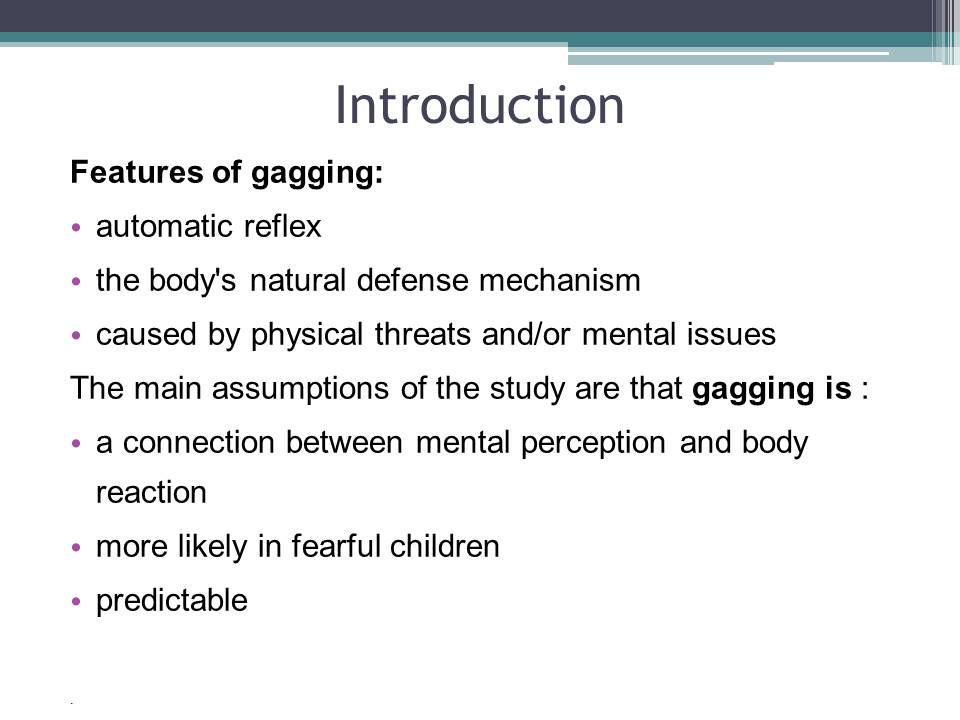
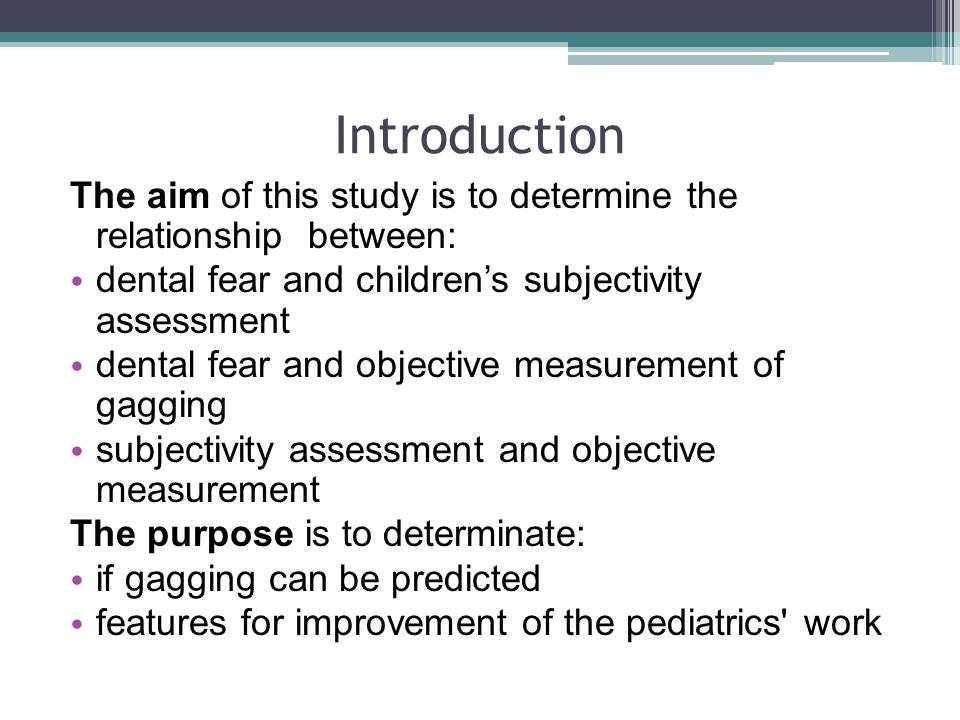
Material
Sampling criteria
- Age between 4-12.
- Speak the Greek language.
- Visited a dentist during a school year.
- Did not require emergency care.
- Did not have physical or mental disabilities.
Final Sample – 734 children (385 boys and 349 girls) who have visited either a university paediatric dental clinic (UC) or at a private paediatric practice (PP).
For the research, the authors got access to two different dental sites in the city of Northern Greece. One of them has a higher price, but shorter waiting lists (PP), and another one has long waiting lists but lower prices (UC). Children who have mental or physical impairments, or emergency needs and do not speak Greek cannot participate in the study because their peculiarities can cause the misunderstanding or misinterpretation of results.
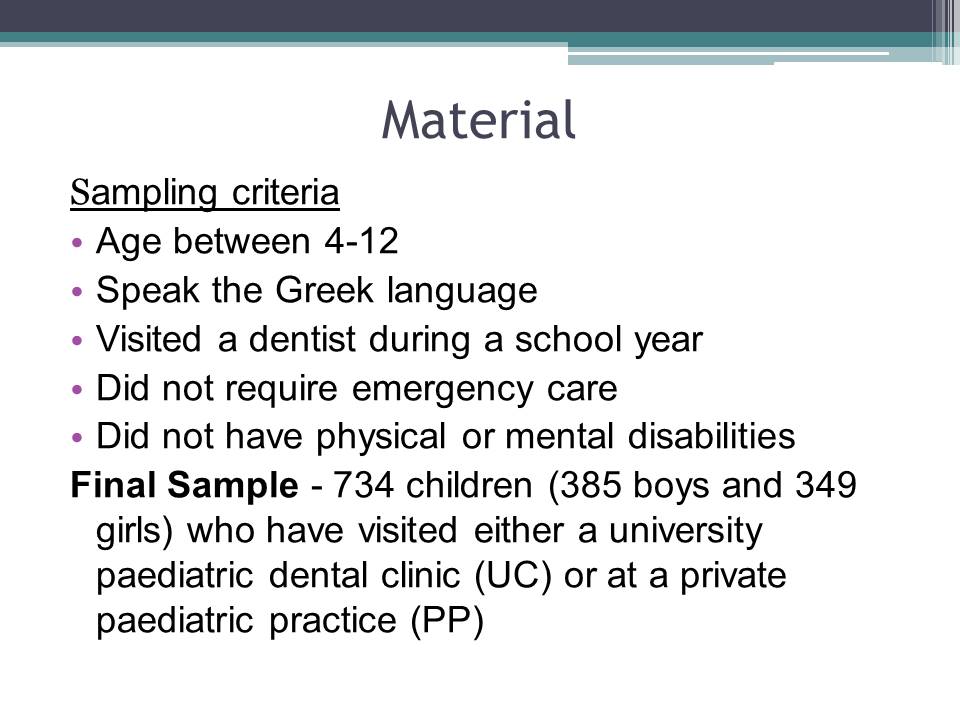
Methods
The main instrument for data collection – survey:
- The Gagging Assessment Scale.
- The Children’s Fear Survey Schedule‐Dental Subscale.
- The Gagging Problem Assessment‐dentist part.
The main instruments and methods for data analysis:
- SPSS version 21.
- Pearson’s chi-square.
- Spearman’s rho.
- Mann-Whitney U test.
The Gagging Assessment Scale (GAS) is a questionnaire in which children answered questions about their feelings during a regular dental procedure, for example, tooth brushing. The Children’s Fear Survey Schedule‐Dental Subscale (CFSS-DS) is the second type of questionnaire that measured children’s fear of procedures in the dental office. The Gagging Problem Assessment‐dentist part (GPA-de-f/SF) is the pediatric test during which the dentist examines the gagging reflex by touching six anatomical sites in a child’s mouth with a dental mirror. Standard instruments of statistical analysis were used to analyze data.
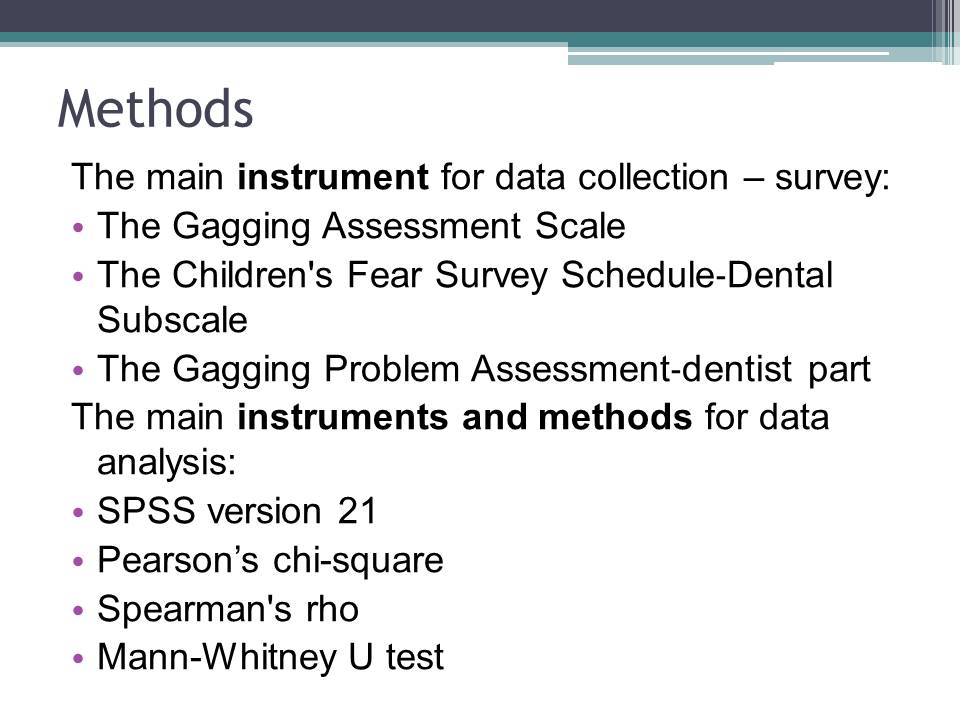
Results
Dentist objective measurement of gagging.
Total of 209 children (28,47%) gagged.
Among them:
- 30.13 % were sent to UC and 26,55% to PP.
- Boys – 34,03% and girls – 22,35%.
- Average age – 7.14 .
The average age of children who did not gag is 7.76.
During the test conducted by the dentist, about 30% of the children gagged. Children fell into this category if touching at least one of the tested places caused gagging. Almost all children have seen the dentist before (91,3%), and gagging is not related to the history of previous visits. The difference between those who experienced gagging in UC and PP clinics is insignificant. However, in general, a noticeably higher number of boys responded to the dental touch than girls. In addition, young children also showed a greater tendency to gag.
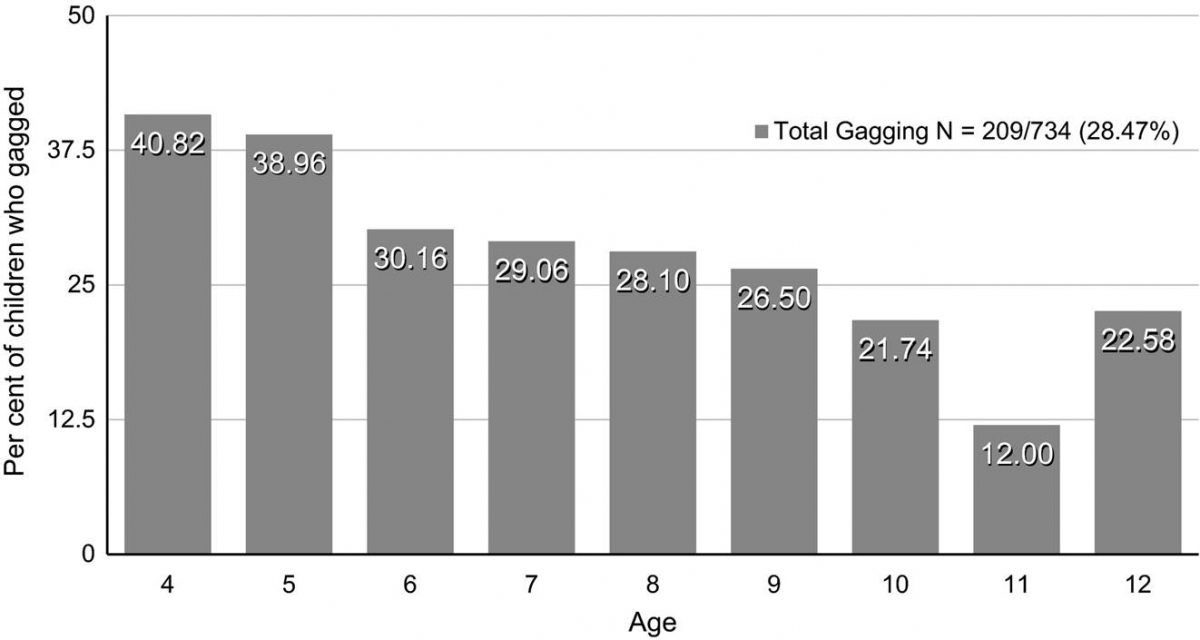
Number of younger children who gagged was significantly higher.

Most often children gagged because of the touching transition to the soft palate.
GAS and CFSS-DS
Total children who completed the survey: GAS – 93.19%, CFSS-DS –91,83%.
Mean age of children who completed survey: GAS – 7.74 years, CFSS-DS – 7.75 years.
Children who did not complete: GAS – 5.82 years, CFSS-DS – 6.00 years.
Among children who had visited the dentist before 97,52% completed GAS, and 95,35% finished CFSS-DS.
Among children who had not visited the dentist before 50,68% completed GAS, and 58,06% finished CFSS-DS .
Age and previous visits of the dentist were not related to GAS and CFSS-DS score.
Children who did not answer the GAS missed the question, “How do you feel when the dentist is working on your back teeth” (Katsouda et al. 2018, p.173). Children who did not finish CFSS-DS did not answer the question about drilling teeth. These problems are related to the fact that children have not previously visited the dentist or did not have such procedures. Among the children who completed both tests, boys more often identified themselves as gaggers, but girls showed a higher score in fear of dentists.
Total results
Children who were rated as gaggers had a higher score :
- in GAS (U=33629.000, P<0.001).
- dental fear (U=31955.500, P<0.001).
- fear of returning (U=46605.000, P<0.001).
There is also a correlation between GAS, CFSS-DS, and fear of returning.
Children who gagged because of the touch during the test with the dentist had a higher predisposition and dental fear for both sexes and all ages at UC and PP clinics. In addition, these children had a greater fear of a return to dental procedures. In this case, the fear of returning to the dentist did not depend on the gender of the child or the type of setting in which he or she was examined. However, children who self-identified themselves as gaggers were more afraid to come to the dentist.
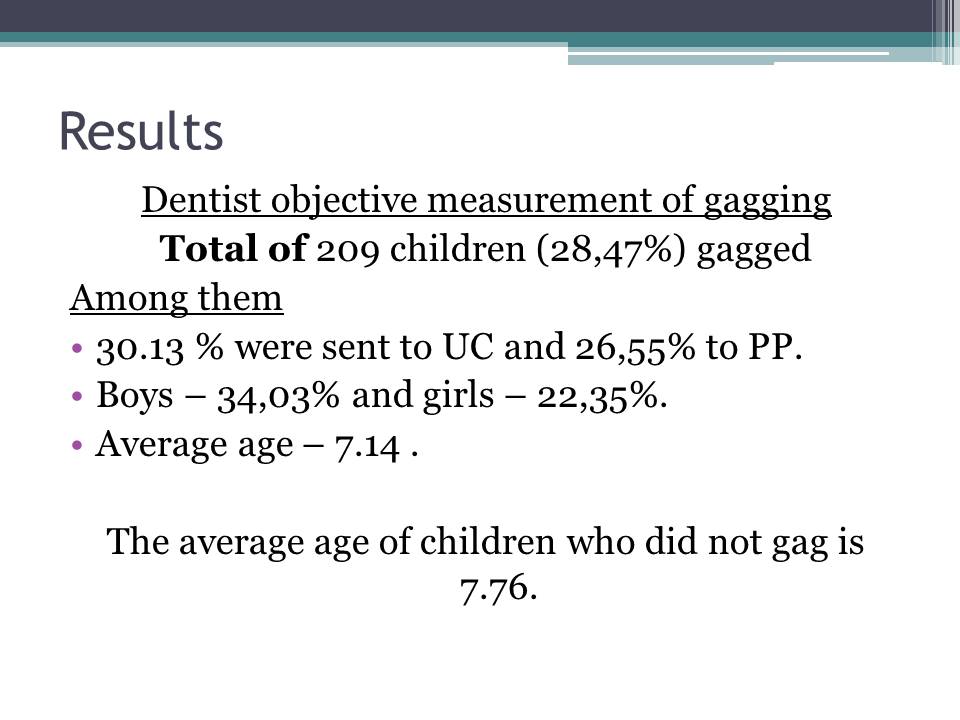
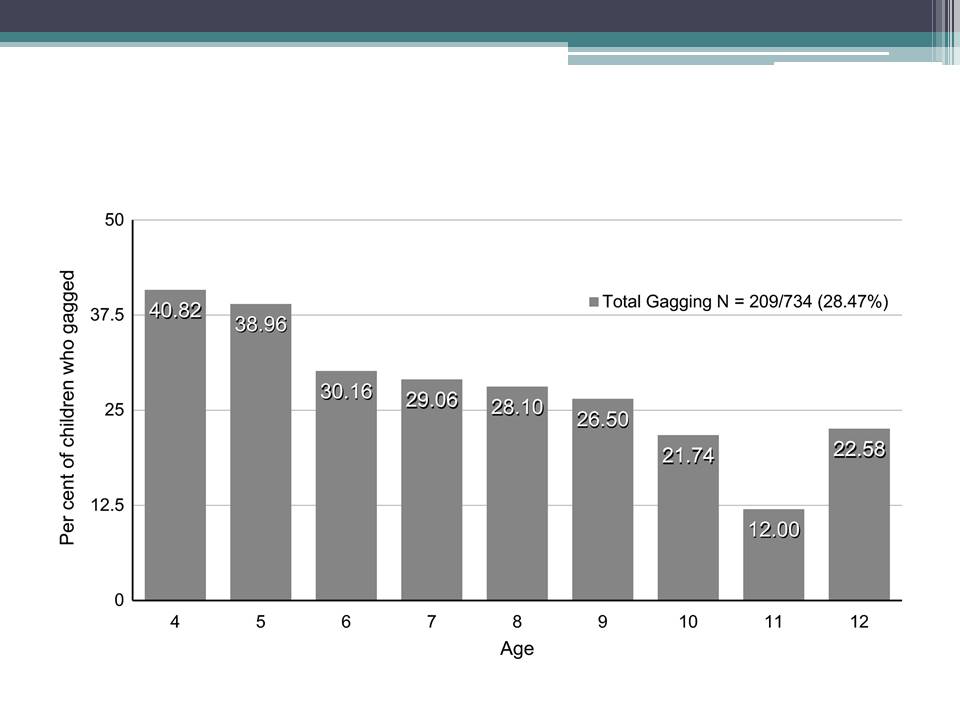
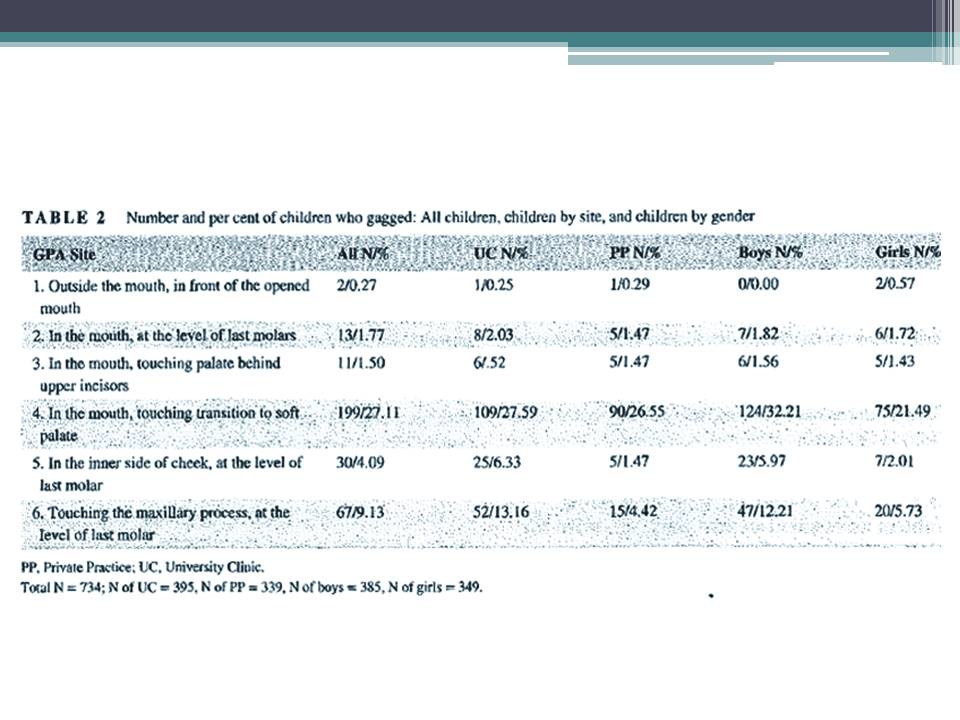
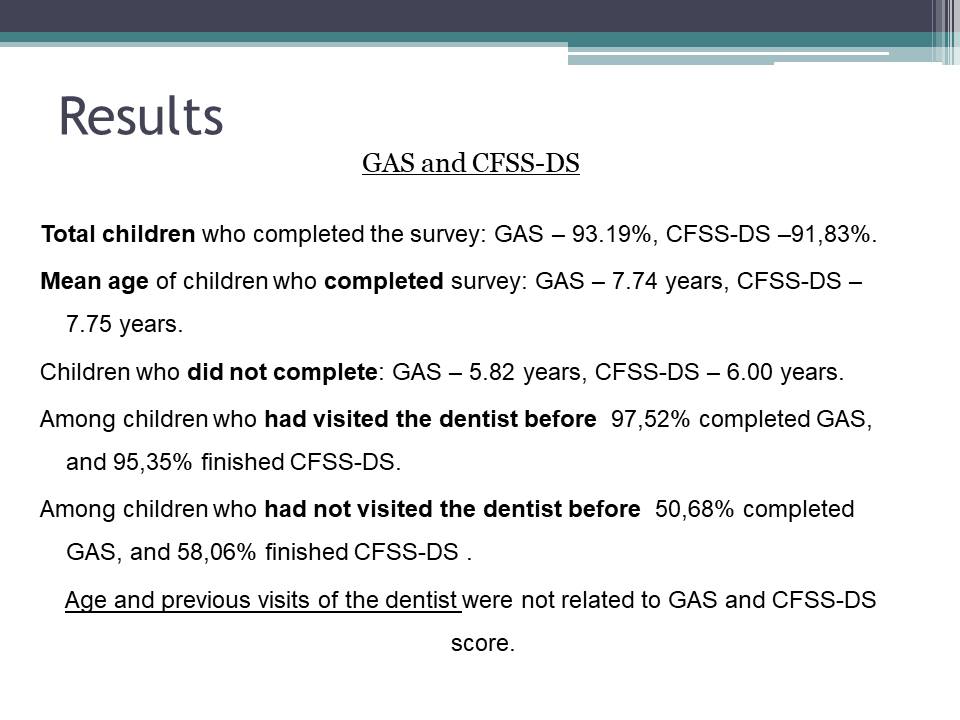
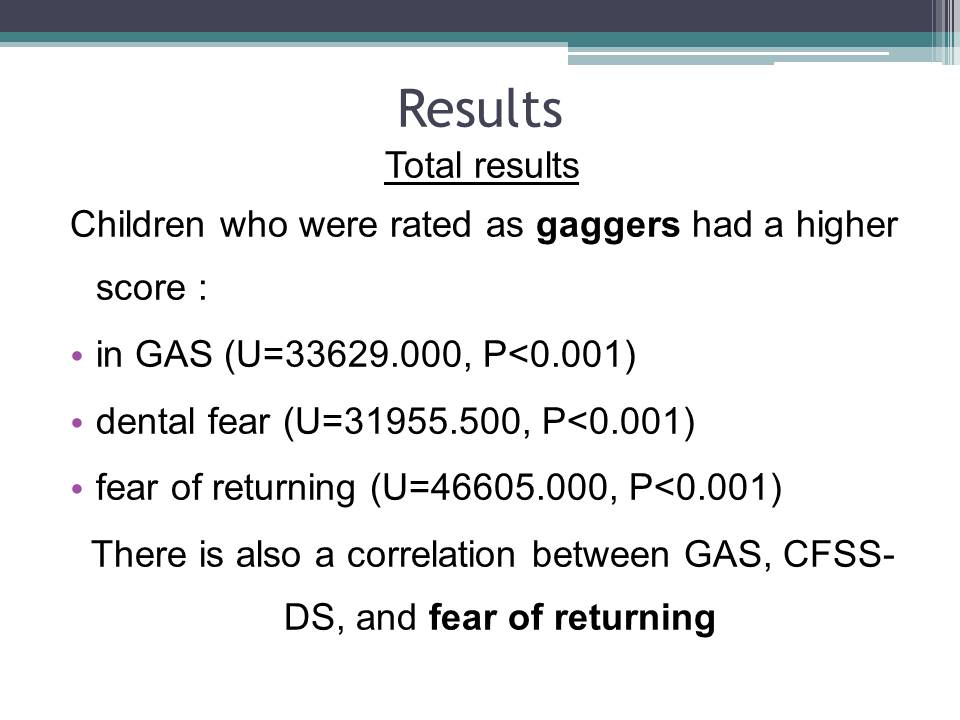
Discussion
The main points of discussion:
- 30% of children gagged.
- Children from UC had a higher tendency to self-report.
- Boys self-report more often than girls.
- No self-reporting difference in the PP.
- Education of parents influences gagging.
- Socio-economic status of parents influences fear.
According to the study, UC parents had a higher level of education and socio-economic level than PP parents (Katsouda et al., 2018). Possibly, this fact was reflected in the choice of a clinic where the adults brought their children, since UC is cheaper than PP. In addition, the data indicate that dental fear in children who visited the UC is higher than in children who have been treated in PP. Consequently, there may be a link between parental income and education and gagging in children, although this assumption does not yet have precise confirmation.
The main points of discussion (cont.):
- Tendency of self-identification related to gagging.
- Score in the GAS related to fear of returning.
- Score in the GAS related to the CFSS-DS score.
- Boys have a higher tendency for gagging.
- Younger and fearful children gag more often.
- Gender predisposition is relevant only for children.
A child’s predisposition to gagging in routine dental procedures can indicate gagging during treatment, and children can self-identify it. The predisposition and fear of dental treatment are associated with the possibility of gagging and increase it, and the process itself grows the child’s fear of repeated procedures. In addition, boys and younger children are more prone to gagging, but this fact does not confirm the same tendency in adults, since reflexes can appear and disappear with age.
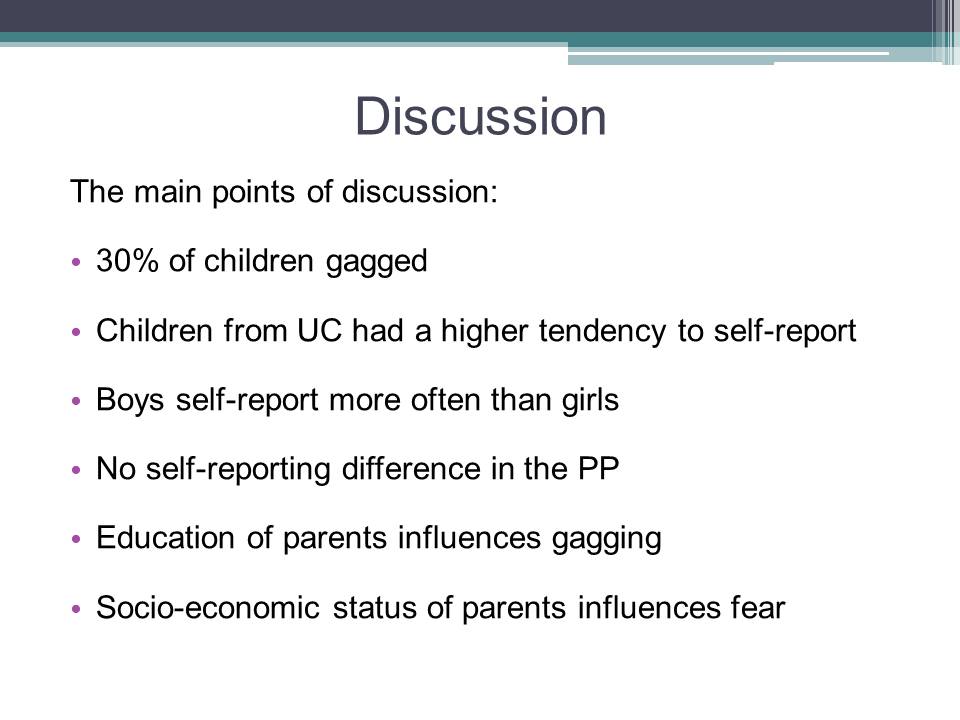
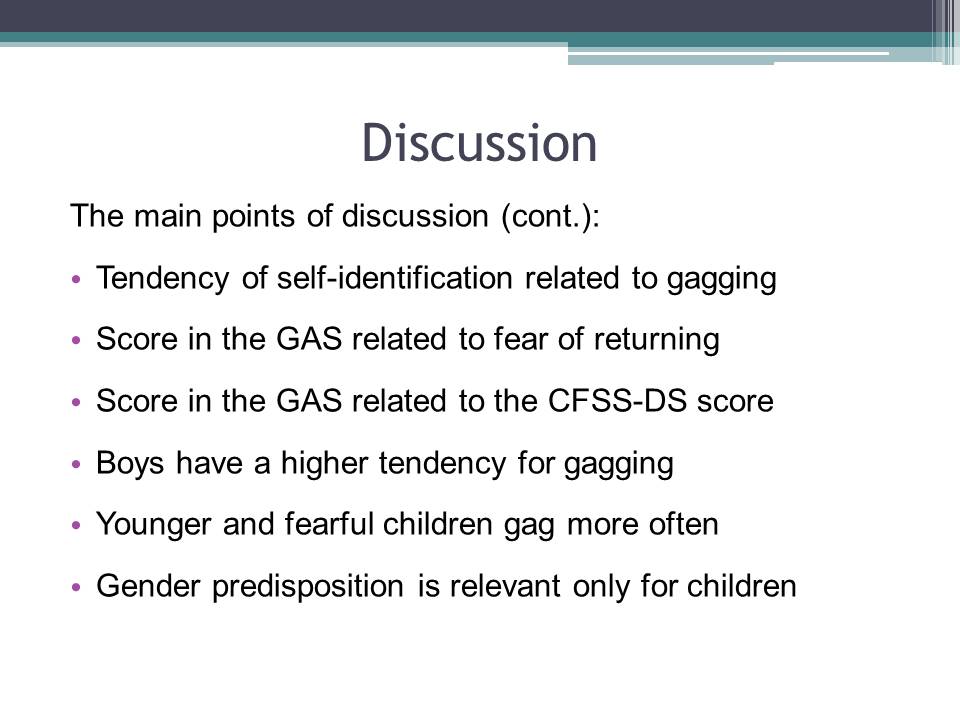
Conclusion
The main findings:
- Dental fear and gagging are connected.
- Gagging depends on gender and age.
- The patient’s dental fear influences gagging.
- Self-evaluation and real gagging related.
The results of the study showed that gagging could occur in 30% of children aged 4 to 12 years. Fear of visiting the dentist is one of the leading causes of gagging during examination and treatment, but the reasons for its occurrence have not been fully researched. Children who self-identify a predisposition to gagging are also more likely to demonstrate it during the dentist’s test. In addition, boys and younger children are more likely to experience gagging regardless of the setting. The limitations of the survey make it possible to expand research and continue to study the issue by including more variables in it and obtaining more accurate data.
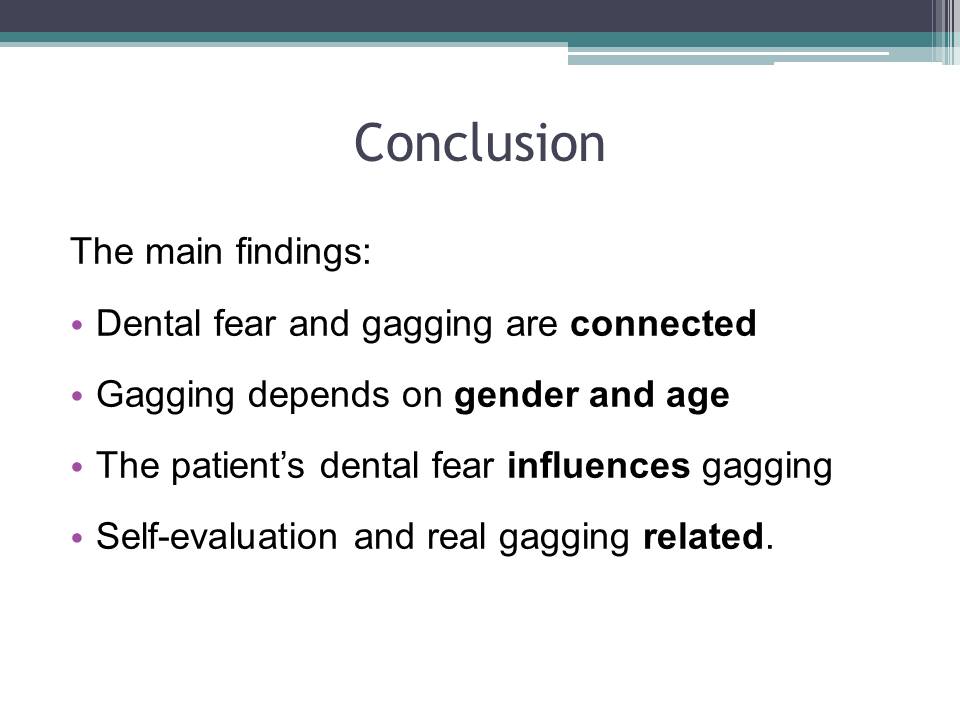
Reference
Katsouda, M. et al. (2018) ‘Gagging prevalence and its association with dental fear in 4-12 year-old children in a dental setting’, International Journal of Paediatric Dentistry, 29(2), pp. 169–176.